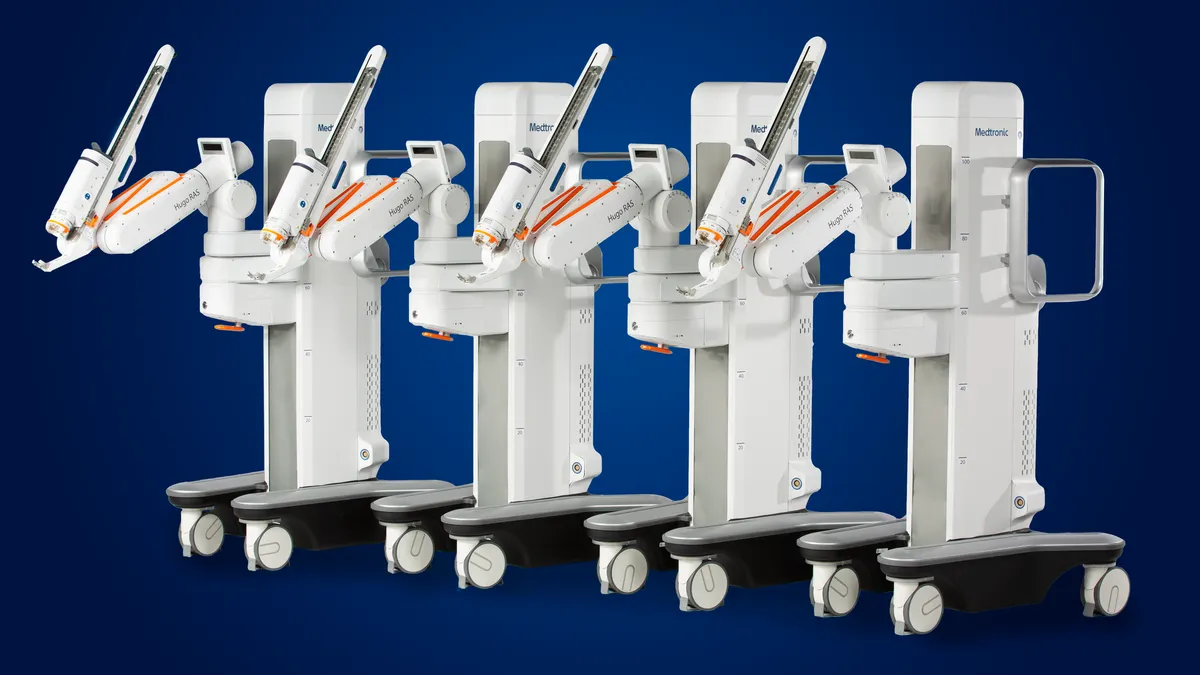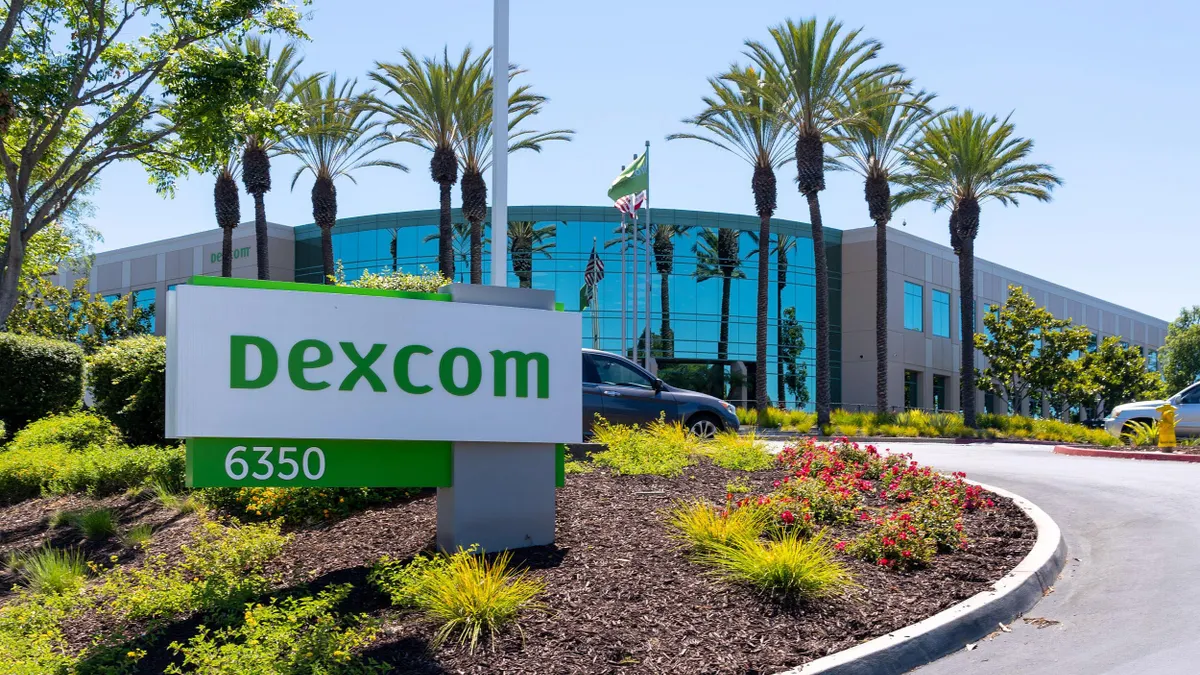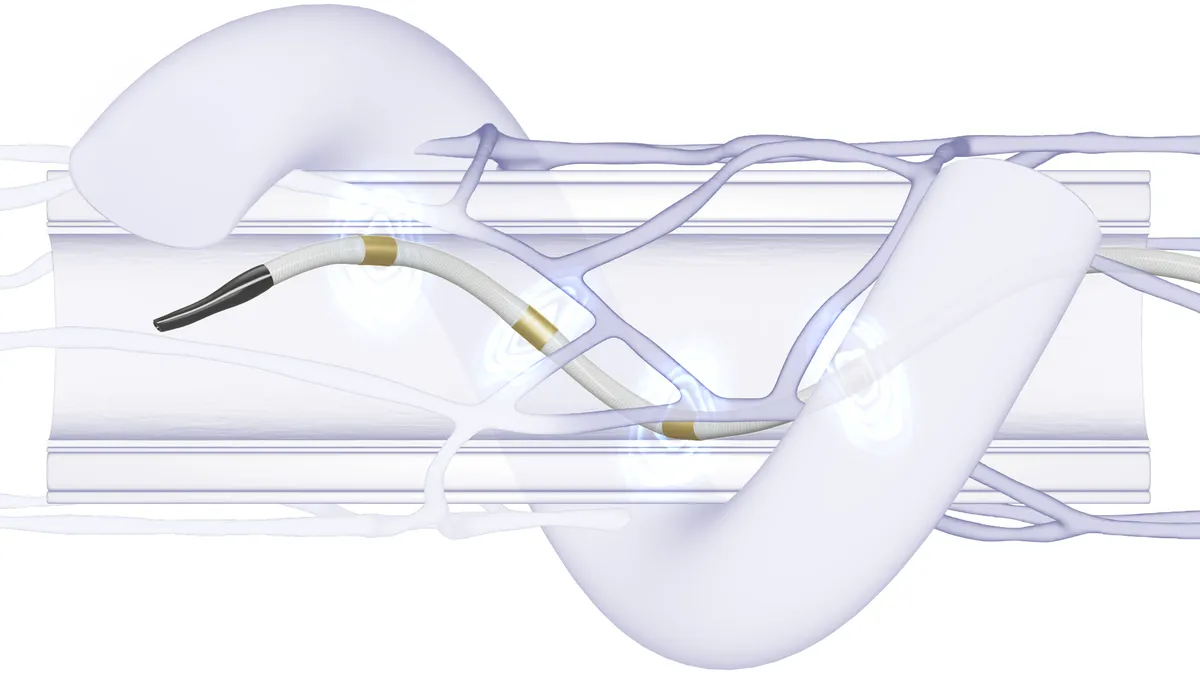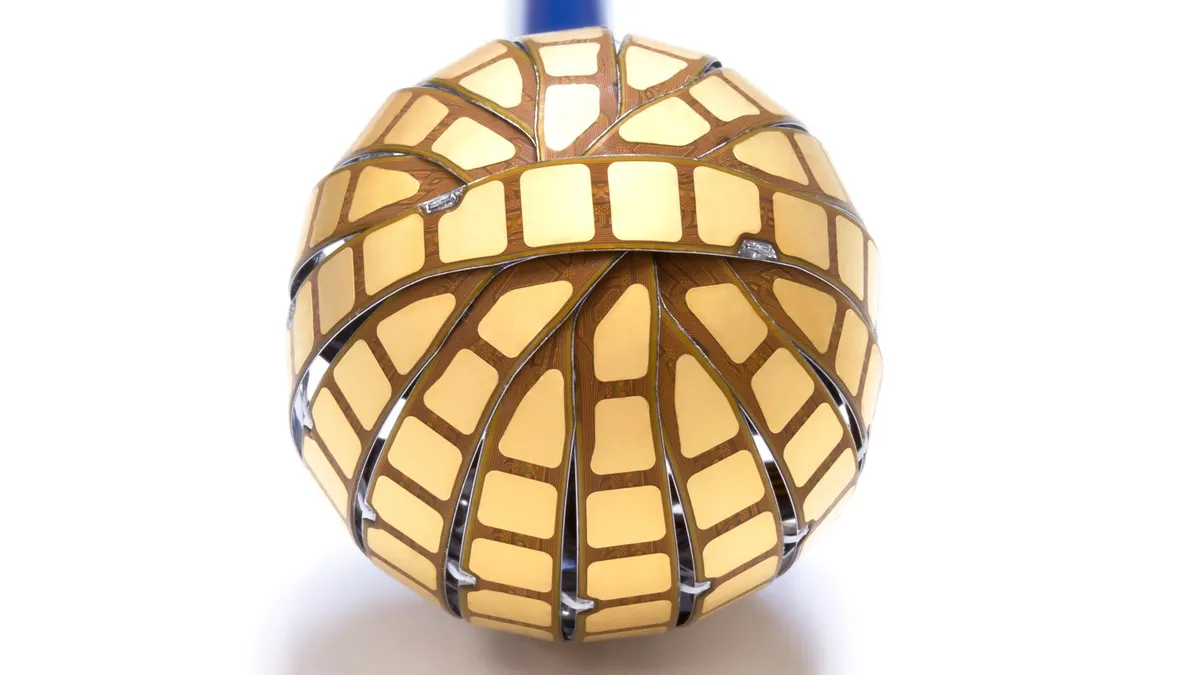Dexcom, one of the biggest makers of continuous glucose monitors, is preparing for two significant product launches this year including the U.S. debut of what it says will be its flagship product, the G7 CGM.
The San Diego-based company also is early in its rollout of the Dexcom ONE, a lower-cost device intended for patients who historically haven’t had access to CGMs.
MedTech Dive spoke with CEO Kevin Sayer to talk about the company’s new products and longer-term plans to expand its devices to more people.
This interview has been edited for length and clarity.
MEDTECH DIVE: What are you focused on going into 2023?
SAYER: We did set our guidance bar in the financial community for 2023 [on Jan. 9]: 15% to 20% revenue growth, a range of $3.35 [billion] to $3.49 billion, which is a lot. I was joking with some folks earlier today, my first conference here with Dexcom, we had just come off a $40 million revenue year so life's a little bit different for me than it used to be.
We will grow internationally and our U.S. growth will be largely [be] correlated with our G7 launch. [Outside of the U.S.], we will launch G7 in waves over the various European markets over the course of 2023 and then [Asia] would be in 2024. In Europe, our Dexcom ONE product will account for more than one-third of the new users that we add next year.
On the U.S. front, our [G7] launch will roll out here in February. We're looking to get reimbursement set up across the various channels. We have commercial payers and then the governmental payers and there's definitely a time frame for each of the reimbursement authorities based upon the channel that the product goes through.
We expect broad reimbursement by the middle of the year. And in the meantime, we will have a bridging program, where people can go buy the product at a lower price for cash and try it.
We're expanding our labeling in things like pregnancy and [CGM use] in the hospital, Type 2 diabetes, health and wellness, and we'll continue to work on those fronts to build those for tomorrow. A big win for '23: We just got [a proposal for] CMS coverage for people with basal insulin. That expands our addressable reimbursable population almost twofold in the U.S. and we think G7 comes at a perfect time to do that. All of those things layered together present a very exciting and fast-paced 2023.
You’ve been selling some of your devices through the pharmacy channel instead of through durable medical equipment distributors. Has that made it more affordable for patients, and has it been a smooth transition with insurers?
It's been a learning experience for us. We've had to learn about all the people in the middle of this whole process to get products to individuals. So we've had to integrate with PBMs and understand how that goes and the discounts. It's much different than anything I've ever been involved in. We've had to hire a team that comes primarily from the pharmaceutical industry where this is done commonly because we didn't necessarily have those skill sets.
It's gone quite well. In all fairness, the insurers pay less in the pharmacy than they do in our previous channel. And they pay less because we don't have to incur as much cost to get the product there, it's easier and that's just how it has worked out. We need to get this product into people's hands as easily as we possibly can. And the pharmacy is where they get their other diabetes products. So getting it there for most of these individuals makes sense.
We still have a lot [of patients] that use the DME channel where they have it shipped from a distributor. The majority of our Medicare patients will get their product in that channel, including the basal patients we'll be adding later in the year, so we need to be cognizant of those individuals in that industry segment as well.
How are you thinking about the broader market for patients with Type 2 diabetes, or even prediabetes?
We're looking at both. It's the learnings from the CGM that can be very beneficial. We find over and over again, when patients with Type 2 diabetes on compounds — not insulin — wear a CGM, they see a vast improvement in their health. Because of the CGM, they have a dataset whereby they can change their behavior and their lives. On the prediabetes side, it's every bit as visible. If you wear a CGM and see you're having meal spikes above a certain amount and your average glucose is too high, you can see what's coming. And I think a combination of some of these new Type 2 drugs and CGM use as a diagnostic and a feedback tool for people with Type 2 diabetes can be very beneficial in delaying it, or possibly even preventing it from ever getting there. And if you can do that, there's a lot of money to be saved.
Would some of these patients use the G7? What design considerations go into that when you’re thinking of a person with Type 2 diabetes?
We needed to get to a hardware-on-body platform like G7 to serve these customers. The features of G7 with its smaller form factor, the ease of use, the different apps and the things we've done on the software side are going to make it possible for us to go after these markets.
The sensor itself in your body doesn't have to necessarily change. We think the app experience probably does. Because there are meaningful insights for one of these individuals that wouldn't be so meaningful for somebody on insulin. For example, our predictive alerts that you're going to go low [blood sugar] or even some of the alerts in general aren't meaningful for somebody with Type 2 diabetes not on insulin.
I think as we look to the future, incorporating data from other health data sources, such as exercise monitors, Fitbits, Apple Watches, things like that, will also be very important in this population. And we can combine that with glucose data, and then provide insights — not criticism or coaching — but nudges or insights.
Do you see partnership opportunities for some of these software features?
We connect to insulin pumps and intensive insulin therapy now, but we’re more than willing to share our data with others.
On our side, we think we probably need to develop different experiences for a Dexcom solution that would be more meaningful, something that would drop in activity data from these sources, something that would point out meal spikes versus just high glucose all the time, things like that. That's one of the reasons we've enhanced our software team significantly as an investment going forward.
We do see partnership opportunities, and we do provide data to Livongo, Levels and a couple of others.
We have software development tools — where if we can create the proper path with the FDA, we can let them pull the data directly into their app without a live API, and it becomes their own experience. A lot of these companies want that type of interface, and for us, if we're selling sensors, that should be okay. That doesn't mean we won't have our own product offerings in the space, and it doesn't mean we won't look at them carefully and see what the best might be. But no, we'll work with all of them.
Update: Clarifies that CMS has proposed, but not yet finalized, expanding Medicare coverage of CGMs to include patients with Type 2 diabetes who use basal insulin.





















